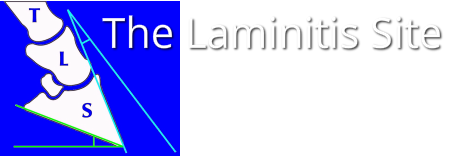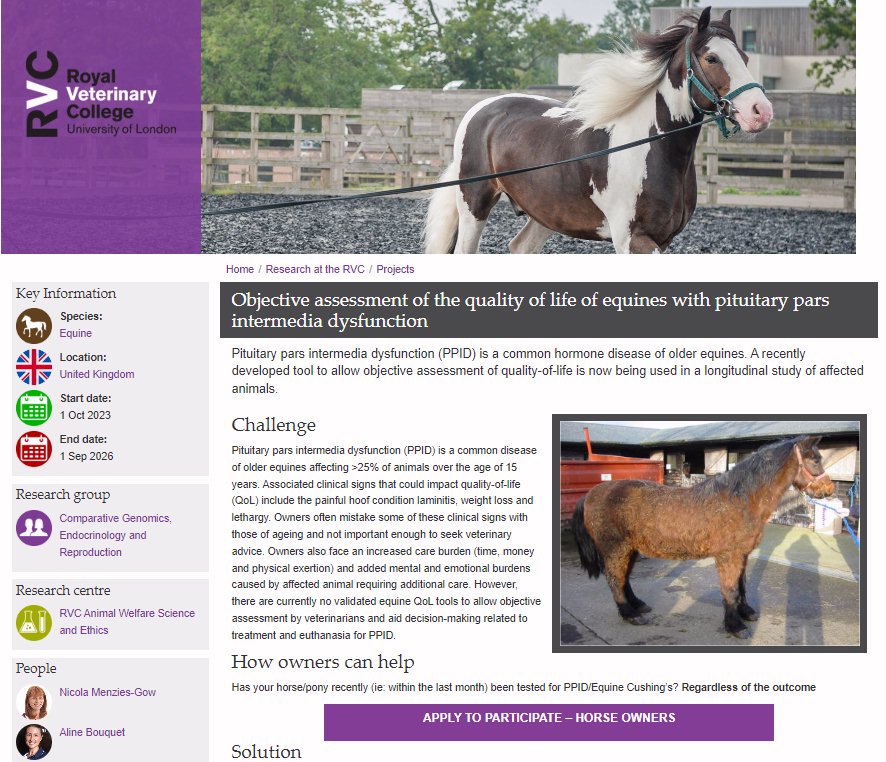The Royal Veterinary College is looking for owners who are planning to test their horse for PPID, or who have had their horse tested for PPID in the last 2-4 weeks, to take part in a 2 year study, with a 10 minute online questionnaire to complete every 3 months. The PPID test doesn't have to have been positive to join the research. The research runs until September 2026, so plenty of time to join.
To join the research, your horse must be aged 10+ and have been tested for PPID within the last:
4 weeks if the test result was positive but no treatment is planned, or negative/equivocal, or
2 weeks if the test result was positive and treatment with pergolide has started within the last 2 weeks, or treatment with pergolide hasn't started yet but is planned.
You must be aged 18+ and be based in the UK (owners and professionals welcome). Your data will be anonymised but you must be happy for the research team to contact you and for your answers to be used in the research.
The purpose of the study is to assess, monitor and quantify the impact of the long-term effect of PPID on the quality of life of a horse/pony and owner's well-being. The data collected will contribute to research into how treatment with pergolide and other long-term changes affect the quality of life of horses with PPID.
Click this link (or the image above) to apply to participate in the study.



 RSS Feed
RSS Feed